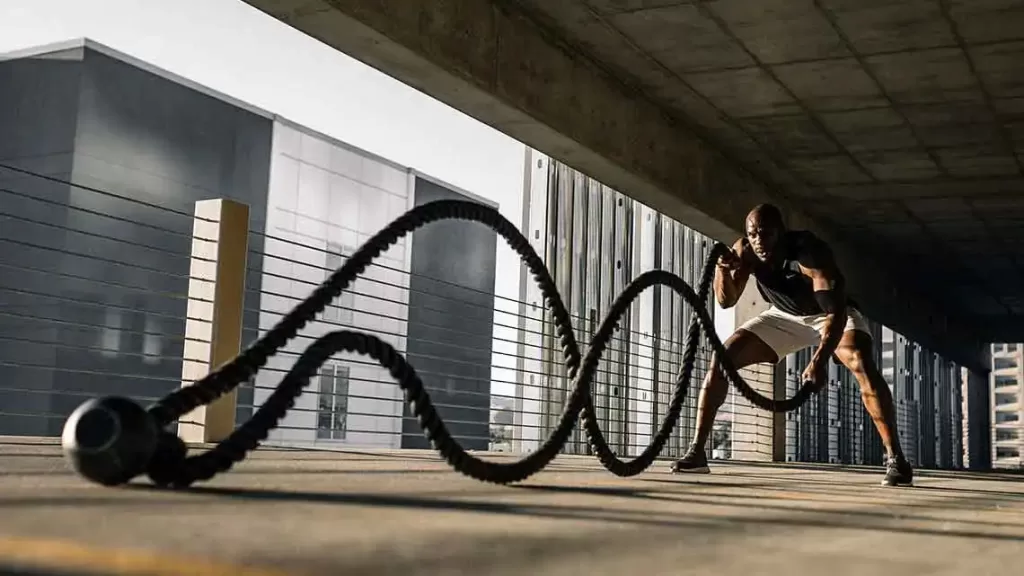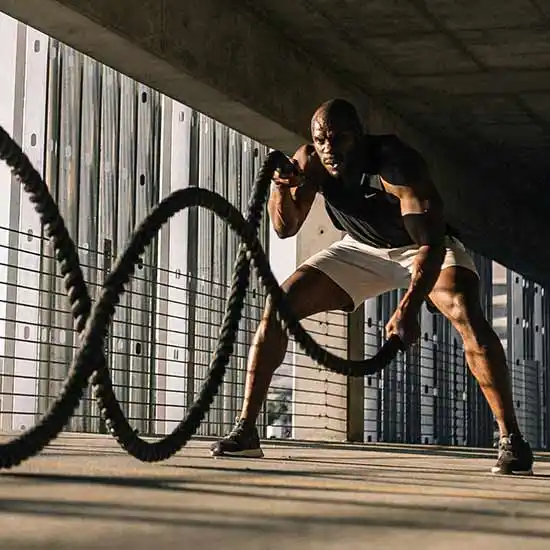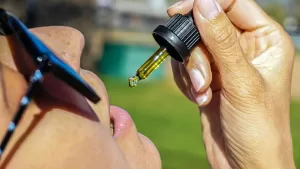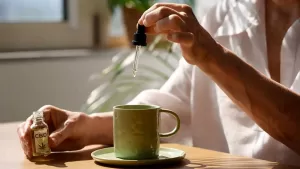Cannabis is becoming increasingly popular in the wellness world, and many people are discovering its benefits for fitness. As society’s understanding of cannabis evolves, more individuals are turning to this versatile plant not just for relaxation, but as a valuable tool to enhance their physical well-being. There begins the concept of ‘weed workouts’ for marijuana enthusiasts. Once primarily viewed through the lens of recreational use, cannabis is now recognized for its potential to boost physical activity and support a more holistic approach to health and fitness.
In this blog, we’ll look at how you can integrate cannabis into your weed workout routine. Whether you’re looking to improve your performance, manage pain, or accelerate recovery, cannabis might offer solutions that align with your fitness goals. We’ll provide detailed insights into the benefits of cannabis for fitness, guide you on selecting the right products, and offer practical tips for incorporating cannabis into different phases of your workout. Join us as we explore the exciting intersection of cannabis and fitness, helping you unlock new potential in your exercise regimen.
1. Understanding Cannabis

What is Cannabis?
Cannabis is a versatile plant known for its psychoactive and medicinal properties, cultivated and utilized for thousands of years across different cultures. It comprises over 100 cannabinoids, but the two most notable ones are THC (tetrahydrocannabinol) and CBD (cannabidiol). These cannabinoids interact with the body’s endocannabinoid system (ECS). This complex cell-signaling system regulates various physiological processes such as mood, pain perception, immune response, and sleep.
The ECS includes receptors found throughout the body, including the brain, organs, connective tissues, glands, and immune cells. When cannabinoids like THC and CBD bind to these receptors, they help modulate and balance internal functions. This interaction explains why cannabis can have such a wide range of effects on both the mind and body.
While THC is primarily known for its psychoactive effects, producing the “high” feeling often associated with cannabis use, it also has therapeutic benefits such as pain relief and appetite stimulation. CBD, conversely, is non-psychoactive and is prized for its calming, anti-inflammatory, and pain-relieving properties. This distinction between THC and CBD has led to the development of various cannabis products tailored for different uses and effects.
Types of Cannabis Products
Cannabis is available in multiple forms, each offering unique benefits and methods of consumption. Here are the most common types:
· Flower: Also known as buds, the dried flower of the cannabis plant are the most traditional form. They can be smoked in a pipe, or bong, rolled into joints, or vaporized using a vaporizer. The effects are felt almost immediately, making it easy to control the dosage.
· Edibles: These are food items infused with cannabis extracts, including gummies, chocolates, brownies, and beverages. Edibles offer a discreet and smoke-free consumption method. However, they have a delayed onset of effects (30 minutes to 2 hours) but can last much longer (up to 8 hours or more), making dosing more challenging.
· Tinctures: These are liquid extracts of cannabis, usually mixed with alcohol or oil, and are taken sublingually (under the tongue) or added to food and drinks. Tinctures provide a quick onset of effects (15-45 minutes) and allow for precise dosing.
· Topicals: Cannabis-infused creams, lotions, balms, and oils are applied directly to the skin. They provide localized relief from pain, inflammation, and skin conditions without producing psychoactive effects, making them ideal for targeted treatment.
· Concentrates: These are highly potent extracts of cannabis, including oils, waxes, shatter, and budder. They are consumed through dabbing or vaporizing and offer a powerful and fast-acting effect. Concentrates are typically used by more experienced consumers due to their high THC content.
Each type of product offers a different experience and set of benefits, allowing users to choose the most suitable method for their needs and lifestyle, or in this case – before, during, or after weed workouts!
Effects of THC and CBD
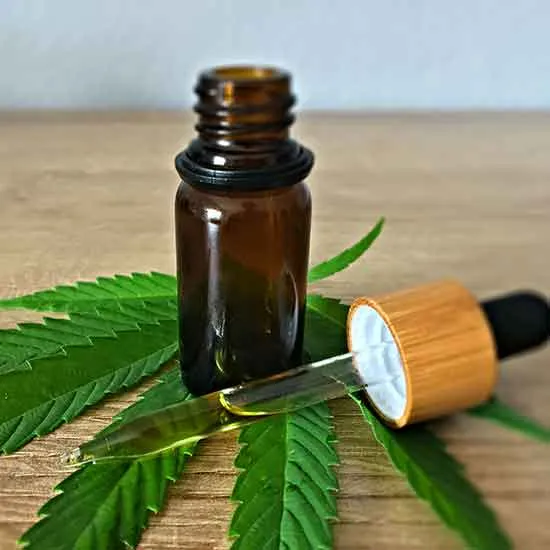
· THC (Tetrahydrocannabinol): THC is the main psychoactive compound in cannabis. It binds to cannabinoid receptors in the brain, producing the characteristic “high” which includes euphoria, relaxation, and altered sensory perception. Beyond its psychoactive effects, THC is effective in relieving pain, reducing nausea and vomiting (particularly in chemotherapy patients), stimulating appetite, and helping with sleep disorders. However, high doses can sometimes lead to anxiety, paranoia, or increased heart rate in sensitive individuals.
· CBD (Cannabidiol): CBD is non-psychoactive and has gained significant popularity for its wide range of therapeutic benefits. It can counteract the psychoactive effects of THC, reducing anxiety and mitigating potential paranoia. CBD is known for its anti-inflammatory, analgesic (pain-relieving), and anxiolytic (anxiety-reducing) properties. It is used to treat conditions such as chronic pain, anxiety disorders, epilepsy (particularly treatment-resistant forms like Dravet syndrome), and neurodegenerative diseases. Additionally, CBD has been found to support heart health and may have anti-tumor effects.
Understanding the different effects of THC and CBD helps users select the right product for their specific needs, whether for recreational, medicinal, or fitness-related purposes. By choosing the appropriate type and balance of cannabinoids, individuals can tailor their cannabis experience to enhance their weed workouts, and overall wellness.

2. Benefits of Cannabis for Fitness
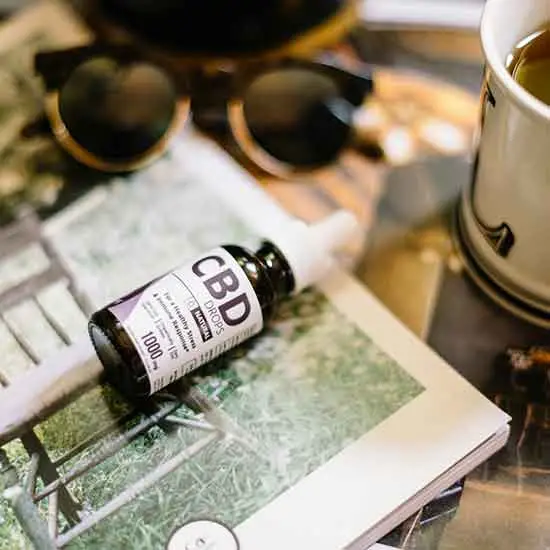
Pain Management
One of the most significant benefits of cannabis for fitness enthusiasts is its ability to manage pain. After an intense workout, muscles and joints can become sore due to micro-tears and inflammation caused by physical exertion. This soreness, often referred to as delayed onset muscle soreness (DOMS), can be uncomfortable and may hinder your ability to continue training effectively.
Cannabis, particularly strains high in CBD, has been shown to have potent analgesic properties that can help alleviate this pain. Athletes often use cannabis to reduce muscle soreness and joint pain, allowing them to recover more quickly and return to their workouts sooner. For instance, topical cannabis products, such as creams and balms, can be applied directly to sore areas to provide targeted pain relief without the psychoactive effects of THC. This makes cannabis an attractive option for both amateur and professional athletes seeking natural pain relief. Are weed workouts here to stay?
Anti-inflammatory Properties
Inflammation is a natural response to injury or intense physical activity, but chronic inflammation can impede recovery and lead to longer periods of downtime. Cannabis has notable anti-inflammatory properties that can help reduce inflammation and promote faster healing. This is primarily due to the interaction of cannabinoids like CBD and THC with the body’s endocannabinoid system, which helps regulate immune responses and inflammation.
By reducing inflammation, cannabis can help decrease the swelling and discomfort associated with muscle strains, sprains, and other workout-related injuries. This means that athletes can experience less downtime between weed workouts, maintain a consistent training schedule, and ultimately achieve their fitness goals more efficiently. For example, incorporating CBD oil or edibles into a post-workout routine can help reduce systemic inflammation, leading to quicker recovery times.
Weed Workouts: Improved Focus and Motivation
Maintaining focus and motivation during workouts is crucial for achieving fitness goals. Certain strains of cannabis, particularly Sativa-dominant ones, are known for their uplifting and energizing effects. These strains can enhance focus and motivation, helping you stay committed and energized during your workouts.
Cannabis can stimulate the release of dopamine, a neurotransmitter associated with pleasure and reward, which can make exercise more enjoyable and less of a chore. This can be particularly beneficial for those who struggle with maintaining a regular workout routine. For instance, consuming a small amount of a Sativa-dominant weed strain before a workout can help you feel more focused and motivated, turning a potentially tedious exercise session into a more engaging and rewarding experience.
Enhanced Relaxation and Stress Reduction
Stress and anxiety can negatively impact your fitness routine, making it harder to stay motivated and enjoy your workouts. Cannabis, especially strains high in CBD, can help reduce stress and anxiety, promoting a sense of calm and relaxation.
By interacting with receptors in the brain that regulate mood and stress, CBD can help alleviate anxiety and create a more relaxed state of mind during your weed workouts. This can be particularly helpful for individuals who experience workout-related anxiety or those who use exercise as a means to cope with stress. Incorporating cannabis into your fitness routine can help create a more enjoyable and stress-free experience, allowing you to focus on your physical health without the mental distractions of anxiety or stress.
For example, using a CBD tincture or vaping a CBD-rich strain before or after a workout can help you feel more relaxed and less anxious, making it easier to engage in and enjoy your fitness activities. This enhanced relaxation can also improve sleep quality, which is essential for recovery and overall well-being.
3. Choosing the Right Cannabis for Your Weed Workouts
Selecting the right type of cannabis for your weed workout routine is essential to maximize its benefits. The strain, dosage, and consumption method can all significantly impact your experience and results. Here’s a guide to help you make informed choices.
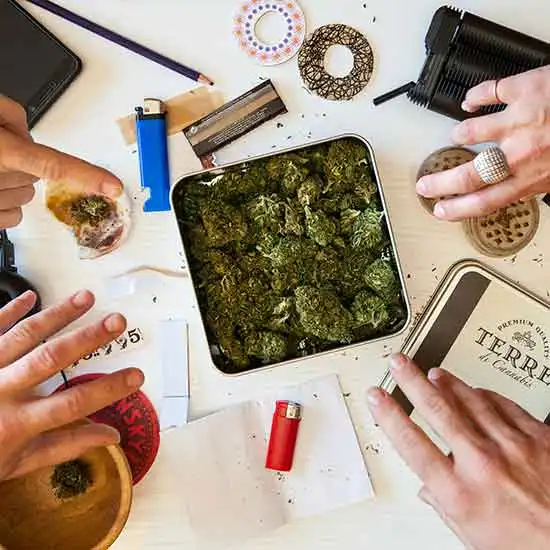
Selecting Strains
The effects of cannabis strains can vary widely, primarily depending on whether they are Sativa-dominant, Indica-dominant, or hybrid strains. Understanding these differences can help you select the right strain for your needs.
· Sativa-Dominant Strains: These strains are known for their uplifting and energizing effects, making them ideal for pre-workout use. Sativas can enhance focus, creativity, and motivation, helping you stay energized and engaged during your workout. Examples of popular Sativa strains include Sour Diesel, Green Crack, and Jack Herer.
· Indica-Dominant Strains: Indica strains are typically associated with relaxing and sedative effects, making them suitable for post-workout recovery. They can help reduce muscle tension, alleviate pain, and promote restful sleep. Popular Indica strains include Northern Lights, Granddaddy Purple, and Blueberry.
· Hybrid Strains: Hybrids are a mix of Sativa and Indica strains and can offer a balanced effect. Depending on the dominant strain, hybrids can be tailored for both pre-workout and post-workout benefits. Examples include Blue Dream (balanced), Pineapple Express (Sativa-dominant), and White Widow (Indica-dominant).
Choosing the right strain involves some experimentation. Start by trying different strains and observing how they affect your weed workouts and recovery.

Dosing Guidelines
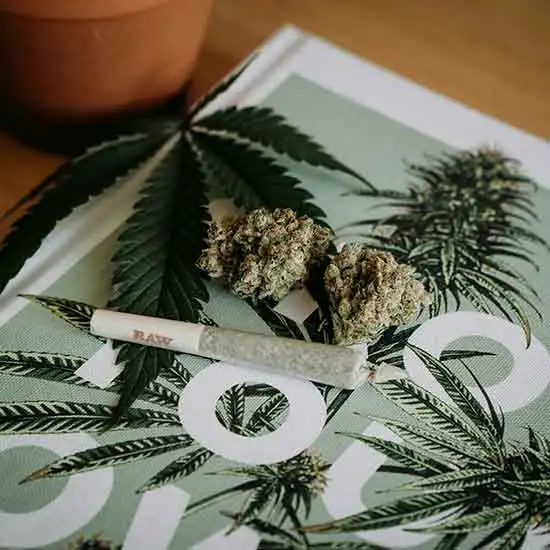
Finding the right dosage is crucial for a positive cannabis experience. Here are some general guidelines to help you get started:
· Start Low and Go Slow: Begin with a low dose, especially if you are new to cannabis or trying a new strain or product. Gradually increase the dose until you find the optimal level that provides the desired effects without any adverse reactions. This advice doesn’t just go for weed, it applies to workouts too!
· Listen to Your Body: Pay attention to how your body responds to different doses. Everyone’s tolerance and sensitivity to cannabis can vary widely, so what works for one person might not work for another.
· Keep a Journal: Maintain a journal to track your dosages, strains, and their effects on your workouts and recovery. This can help you identify patterns and make more informed decisions about what works best for you.
Consumption Methods
Different methods of cannabis consumption offer varying onset times, durations, and intensities of effects. Here are the most common methods and their characteristics:
· Smoking and Vaping: These methods provide quick effects, typically felt within minutes, making it easy to control the dose. Smoking involves inhaling the smoke from burnt cannabis flower, while vaping involves inhaling vaporized cannabis oil or flower. Both methods are suitable for those who need immediate effects, such as before your weed workouts for energy, or quick pain relief after.
· Edibles: Edibles are food products infused with cannabis extracts. They take longer to kick in (30 minutes to 2 hours) but provide longer-lasting effects (up to 8 hours or more). Edibles can be harder to dose because the onset is delayed, and the effects can be more intense. They are best for those looking for prolonged relief, such as post-workout recovery.
· Tinctures: Tinctures are liquid cannabis extracts taken sublingually (under the tongue) or added to food and drinks. They provide a fast onset of effects (15-45 minutes) and allow for precise dosing. Tinctures are versatile and can be used both pre- and post-workout.
· Topicals: These are cannabis-infused creams, lotions, and balms applied directly to the skin. Topicals provide localized relief from pain and inflammation without producing psychoactive effects, making them ideal for targeted treatment of sore muscles and joints. They are perfect for post-workout recovery.
4. Incorporating Cannabis into Your Weed Workouts
Integrating cannabis into your workout routine can enhance your exercise experience, improve performance, and aid in recovery. Here’s a detailed guide on how to effectively incorporate cannabis into different phases of your weed workout routine.
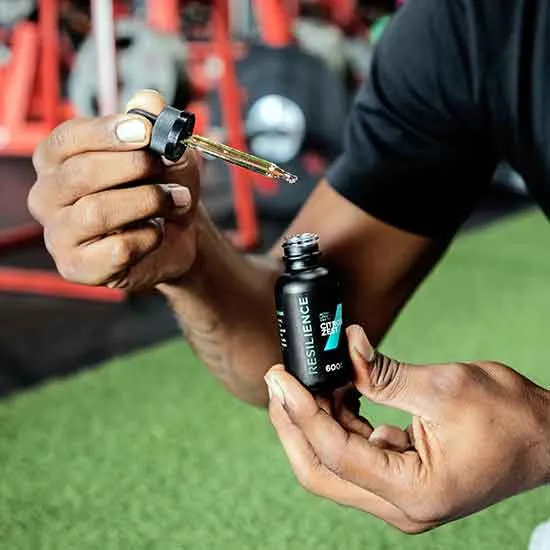
Pre-Workout: Energize and Focus
To get the most out of your weed workout, it’s essential to start with the right mindset and energy levels. Cannabis can help by providing an energizing and focus-enhancing boost.
· Choose a Sativa-Dominant Strain: Sativa strains are known for their uplifting and invigorating effects. They can increase energy, enhance focus, and promote a sense of motivation, making them ideal for pre-workout use.
· Timing and Dosing: Consume your chosen Sativa strain about 30 minutes before starting your workout. This allows enough time for the effects to set in. Begin with a small dose to gauge your tolerance and avoid feeling too high, which can be counterproductive.
· Consumption Methods: Consider vaping or using a tincture for quick onset and easy dose control. These methods will help you feel the effects promptly, allowing you to adjust your dose if necessary.

During Workout: Staying in the Zone
Maintaining focus and staying in the zone during your weed workout is crucial for achieving your fitness goals. Here’s how to use cannabis to stay on track:
· Hydration: Cannabis can cause dry mouth, so it’s important to stay well-hydrated. Drink plenty of water before, during, and after your workout to keep your body functioning optimally.
· Dose Responsibly: Avoid consuming too much cannabis during your workout, as it can lead to dizziness or lack of coordination. If you feel the need for a boost, use a small, controlled dose.
· Listen to Your Body: Pay close attention to how your body feels during your workout. Cannabis affects everyone differently, so adjust your dose based on your personal experience and comfort level.
Post-Workout: Recovery and Relaxation
Recovery is a vital part of any fitness routine, and cannabis can play a significant role in this phase by helping to relax muscles and reduce pain.
· Choose an Indica-Dominant Strain: Indica strains are renowned for their calming and sedative effects. They can help relax your muscles, alleviate pain, and promote restful sleep, all of which are essential for effective recovery.
· Timing and Dosing: Use your Indica strain shortly after your workout. Start with a small dose to see how your body responds. If needed, you can gradually increase the dose to achieve the desired level of relaxation and pain relief.
· Consumption Methods: Edibles and topicals can be particularly beneficial for post-workout recovery. Edibles provide long-lasting relief, while topicals offer localized pain management without psychoactive effects.
Conclusion
Incorporating cannabis into a ‘weed workout’ routine offers a range of benefits, from boosting energy and focus to aiding in post-workout recovery. By understanding strains, dosing, and consumption methods, you can tailor cannabis use to your fitness goals. Remember to start with low doses, be mindful of legalities, and monitor potential side effects. With careful consideration, cannabis can enhance your fitness journey, providing a natural and effective complement to your exercise routine.
The information provided is not a substitute for professional medical advice, diagnosis, or treatment. Consult with a qualified healthcare professional for personalized advice based on your medical condition.

